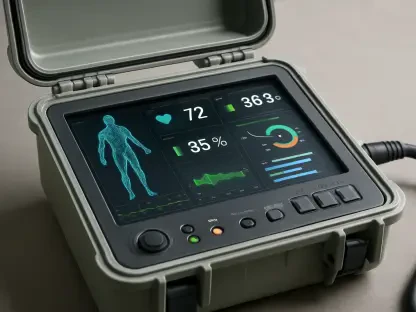In a significant move to address long-standing issues in veterans’ healthcare technology, the Senate has recently passed a spending bill that links full funding for the Department of Veterans Affairs’ (VA) Electronic Health Record (EHR) Modernization program to stringent oversight measures. This decision comes amid growing concerns over the troubled rollout of the EHR system, a pivotal initiative designed to revolutionize healthcare delivery for veterans through advanced cloud technology hosted by Oracle. With billions of dollars at stake, lawmakers are demanding transparency and accountability to ensure that the system not only modernizes outdated infrastructure but also prioritizes patient safety and operational efficiency. The Senate’s approach reflects a broader frustration with delays, technical glitches, and reported harm linked to the system’s deployment, setting the stage for a critical evaluation of how federal agencies manage large-scale tech projects. This development underscores the delicate balance between innovation and the practical challenges of implementation in a complex healthcare environment.
Funding with Strings Attached
The Senate’s latest spending bill allocates a substantial $3.4 billion for the VA’s EHR program through fiscal 2026, but it comes with a notable catch that emphasizes accountability. A significant portion—30% of the funding—is withheld until July of the following year, contingent on the VA submitting comprehensive updates by June 1. These updates must include a revised life-cycle cost estimate, a detailed facility-by-facility deployment schedule for all targeted VA locations, projected staffing levels, and necessary resources. Additionally, the VA Secretary is required to certify that facilities using the EHR meet or exceed key healthcare performance metrics. Perhaps most critically, the department must demonstrate four consecutive successful site deployments without delays or patient harm. This stringent condition reflects the Senate’s determination to prevent a repeat of past failures, ensuring that the substantial financial investment yields measurable progress in modernizing veterans’ healthcare delivery systems.
Beyond the financial constraints, the Senate’s oversight extends to operational benchmarks that aim to safeguard veterans’ well-being during the EHR rollout. This follows a troubling 2023 report that associated the system’s deployment with six cases of catastrophic harm, including four deaths, prompting a temporary pause under the Biden administration. Lawmakers are now focused on ensuring that such incidents do not recur, placing pressure on the VA to address underlying issues before further funding is released. The emphasis on detailed reporting and certification highlights a broader trend of congressional insistence on transparency in federal tech initiatives. With veterans’ lives and taxpayer dollars at stake, the Senate is signaling that modernization cannot proceed unchecked. Instead, it must be accompanied by rigorous evaluation and clear evidence of improvement, setting a precedent for how large-scale government projects are managed in the face of persistent challenges.
Persistent Challenges in EHR Implementation
Since its inception, the VA’s EHR system has grappled with significant technical and operational hurdles that have hindered its promise of seamless healthcare modernization. Usability issues, inadequate training for staff, and instances of reduced employee productivity have plagued the rollout, often resulting in frustration among clinicians and, more alarmingly, harm to patients. A Government Accountability Office (GAO) report noted incremental improvements in recent years, yet the system still struggles to meet the expectations set for a project of this magnitude. The Senate’s Joint Explanatory Statement accompanying the bill stresses the importance of holding contractors, particularly Oracle Cerner, accountable for resolving these persistent problems. Improved training and support for staff adoption are also highlighted as critical areas needing attention, as lawmakers remain cautious about potential setbacks despite some recent progress in deployment efforts.
Compounding these challenges is the historical context of delays and safety concerns that have shadowed the EHR program for years. The Senate’s cautious optimism about recent efforts is tempered by a recognition that past failures have eroded confidence in the system’s ability to deliver on its goals. Lawmakers are particularly concerned about ensuring that modernization does not compromise patient safety or operational efficiency, a concern underscored by the significant funding increase proposed in the fiscal 2026 budget. VA Secretary Doug Collins has attempted to reassure Congress by affirming the agency’s commitment to the program and related tools like the External Provider Scheduling system. However, with workforce reductions and ongoing technical issues, the path forward remains uncertain. The Senate’s insistence on strict conditions reflects a broader demand for tangible outcomes, pushing the VA to prioritize both innovation and the practical realities of implementing such a complex system across diverse facilities.
Balancing Modernization and Accountability
Looking back, the Senate’s decision to tie funding to strict oversight marked a pivotal moment in the VA’s EHR modernization journey. The conditional allocation of billions in funding was a clear message that while technological advancement in veterans’ healthcare was essential, it could not come at the expense of safety or fiscal responsibility. Historical struggles, including patient harm and deployment delays, had necessitated this balanced approach, blending support with rigorous accountability measures. The detailed requirements imposed on the VA, from revised cost estimates to successful site rollouts, were designed to ensure that past mistakes informed future progress. This legislative action set a critical precedent for how federal tech initiatives could be managed under intense scrutiny.
Moving forward, the VA faced the challenge of meeting these expectations while delivering a system that truly served veterans’ needs. The next steps involved not only addressing technical and training deficiencies but also fostering trust with lawmakers through transparent reporting. Collaboration with contractors to resolve systemic issues was paramount, as was the need to prioritize patient outcomes over mere technological deployment. As the agency navigated this complex landscape, the focus remained on translating substantial investments into meaningful improvements. The Senate’s framework offered a roadmap for success, provided the VA could align its ambitions with the practical demands of implementation, ensuring that veterans received the high-quality, modern healthcare they deserved.









